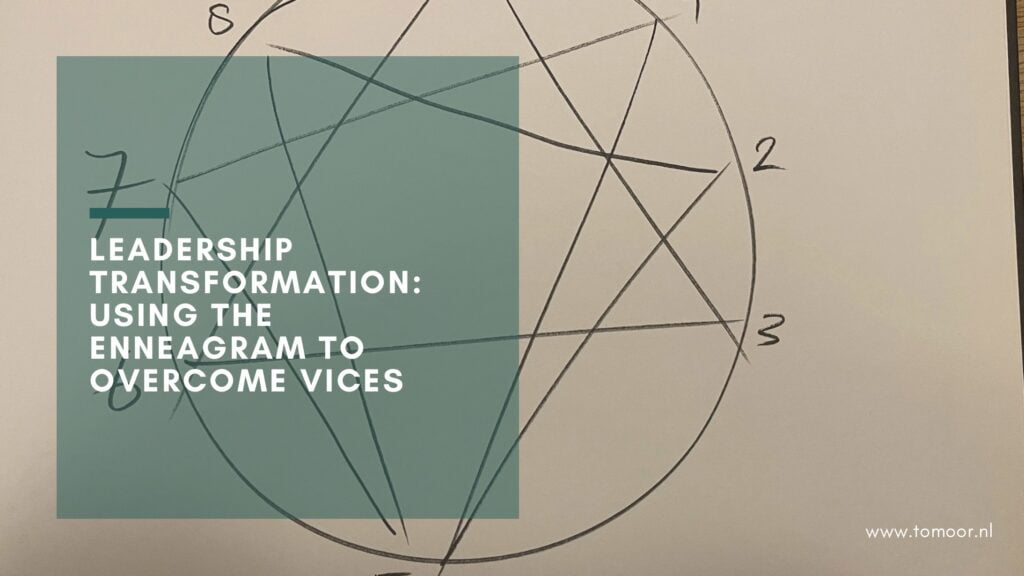At times, as a Director of Learning and Development, you may encounter the challenge of maintaining the inspiration of directors and leaders within your organization. Some of them might believe that they’ve exhausted their leadership journeys and coaching.
In such situations, employing the Enneagram in a profound manner can be particularly beneficial—it encourages them to engage in introspection regarding their inherent vices. Thats were they usual suffer from
These vices, often referred to as “passions” or “deadly sins,” represent the underlying emotional issues or desires that can lead each type to engage in negative or limiting behaviors. When people in leadership positions are influenced by these vices, it can have a significant impact on their leadership style and effectiveness.

Vices per leadership type and limiting behaviour in leadership
Type 1 – The Perfectionist
- Vice: Anger/Resentment
- Limiting Behavior in Leadership: Type 1 leaders may exhibit excessive rigidity and perfectionism. They might struggle with accepting imperfections in themselves and others, leading to frustration and an overly critical leadership style.
Type 2 – The Helper
- Vice: Pride
- Limiting Behavior in Leadership: Type 2 leaders may prioritize gaining approval and recognition, sometimes to the point of people-pleasing or manipulation. Their desire for validation can lead to burnout and difficulties in setting boundaries.
Type 3 – The Achiever
- Vice: Deceit/Vanity
- Limiting Behavior in Leadership: Type 3 leaders can be overly focused on success and image, potentially sacrificing authenticity. They may struggle with being overly competitive or even deceitful, which can affect team dynamics.
Type 4 – The Individualist
- Vice: Envy
- Limiting Behavior in Leadership: Type 4 leaders might become preoccupied with what’s missing or unique about them. This focus on personal inadequacies can lead to emotional volatility and difficulty in making pragmatic decisions.
Type 5 – The Investigator
- Vice: Avarice/Greed
- Limiting Behavior in Leadership: Type 5 leaders may hoard information and withdraw emotionally, hindering effective communication. Their reluctance to share knowledge can impact team collaboration.
Type 6 – The Loyalist
- Vice: Fear
- Limiting Behavior in Leadership: Type 6 leaders may struggle with excessive anxiety and mistrust. This can lead to indecisiveness and an overly cautious approach to leadership, potentially missing opportunities.
Type 7 – The Enthusiast
- Vice: Gluttony
- Limiting Behavior in Leadership: Type 7 leaders may seek constant stimulation and avoid discomfort. Their impulsiveness and lack of focus on long-term goals can impact strategic planning.
Type 8 – The Challenger
- Vice: Lust
- Limiting Behavior in Leadership: Type 8 leaders may become domineering and confrontational. They might struggle with empathy and vulnerability, which can create a hostile leadership style.
Type 9 – The Peacemaker
- Vice: Sloth
- Limiting Behavior in Leadership: Type 9 leaders may resist conflict to the point of inaction, leading to procrastination and difficulty making necessary decisions. Their passivity can be seen as ineffective leadership.
Enneagram leadership transformation in your organization
As we conclude our journey through the transformative power of the Enneagram in leadership, we’re reminded of the profound impact self-awareness and introspection can have on our ability to lead with authenticity and purpose. Embracing our inherent vices, those ‘passions’ or ‘deadly sins,’ may seem daunting, but it’s through this deep exploration that we unearth our greatest potential for growth.
Leadership, after all, is not about perfection, but the relentless pursuit of becoming better versions of ourselves. By confronting our vices head-on, we not only elevate our leadership style but also inspire those we lead to embark on their own journeys of self-discovery and growth.
